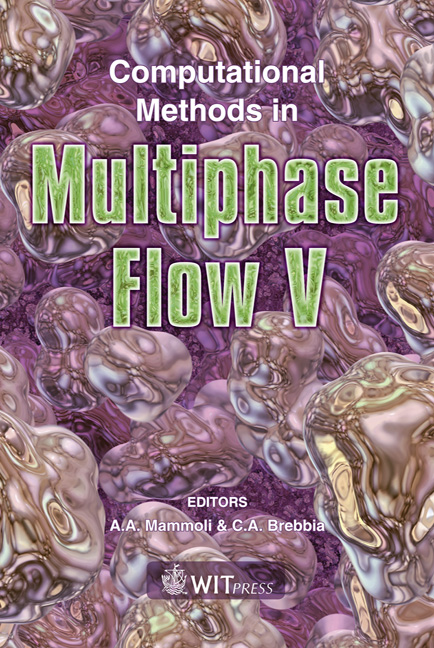Sediment Transport Via Dam-break Flows Over Sloping Erodible Beds
Price
Free (open access)
Transaction
Volume
63
Pages
12
Page Range
329 - 340
Published
2009
Size
363 kb
Paper DOI
10.2495/MPF090281
Copyright
WIT Press
Author(s)
M. Emmett & T. B. Moodie
Abstract
When a semi-infinite body of homogeneous fluid initially at rest behind a vertical retaining wall is suddenly released by the removal of the barrier, the resulting flow over a horizontal or sloping bed is referred to as a dam-break flow. When bed resistance is neglected the exact solution, in the case of a stable horizontal bed, may be obtained on the basis of shallow-water theory via the method of characteristics and the results are well known. Discrepancies between these shallow-water based solutions and experiments have been partially accounted for by the introduction of flow resistance in the form of basal friction. This added friction significantly modifies the wave speed and flow profile near the head of the wave so that the simple exact solutions no longer apply. Various asymptotic or numerical approaches must be implemented to solve these frictionally modified depth-averaged shallow-water equations. When the bed is no longer stable so that solid particles may be exchanged between the bed and the fluid, the dynamics of the flow become highly complex as the buoyancy forces vary in space and time according to the competing rates of erosion and deposition. It is our intention here to study dam-break flows over erodible sloping beds as agents of sediment transport, taking into account basal friction as well as the effects of particle concentrations on flow dynamics including both erosion and deposition. We shall consider shallow flows over initially dry beds and investigate the effects of changes in the depositional and erosional models employed, in the nature of the drag acting on the flow, and in the slope of the bed. These models include effects hitherto neglected in previous studies and offer insights into the transport of sediment in the worst case scenario of the complete and instantaneous collapse of a dam. Keywords: gravity current, dam-break flow, sediment transport, dilute sediment.
Keywords
gravity current, dam-break flow, sediment transport, dilute sediment





